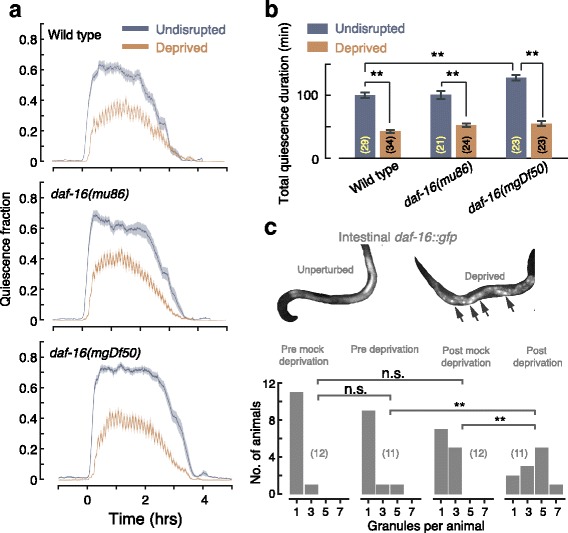Fig. 1.

A periodic mechanical stimulus can partially and nonlethally reduce lethargus quiescence and induce translocation of DAF-16. a The fraction of quiescence measured during L4 lethargus of undisrupted (gray) and deprived (orange) wild-type animals and daf-16 mutants. Locomotion was forced using a square wave of mechanical vibrations with a 6-min period and 50% duty cycle. N = 30 animals, shaded areas depict mean ± standard error of the mean (SEM). b The total time in which quiescence was observed integrated over the data presented in a. Error bars depict mean ± SEM. c DAF-16::GFP fluorescence in the intestine before and after 1 h of sleep deprivation. Top: examples of green fluorescent protein (GFP) fluorescence in unperturbed and partially deprived animals. Arrowheads point to bright particles indicating concentration of DAF-16::GFP. Bottom: Histograms of the number of bright particles per animal identified under each set of conditions. Sample sizes are denoted in parentheses. Single and double asterisks denote significant differences with p < 0.05 and p < 0.01, respectively
